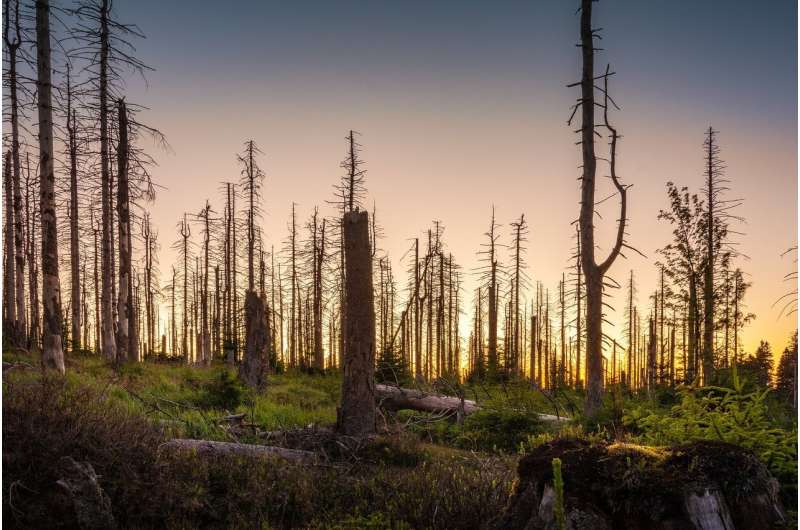August 15, 2019 report
Research: Link between increased atmospheric vapor deficit and worldwide loss of vegetation

A large international team of researchers has found evidence of a connection between an increase in the atmospheric vapor deficit and worldwide vegetation loss. In their paper published in the journal Science Advances, the group describes their analysis of climate datasets and the correlation of an increase in vapor pressure deficit (VPD) to loss of vegetation around the world over the past half-century.
Scientists have been studying the possible repercussions of global warming for several years, and suggest it is likely to lead not only to warmer temperatures, but also changes to weather patterns. One such weather change not often mentioned is VPD, which is the difference in air pressure due to water vapor during fully saturated times versus times when it unsaturated. When VPD is increasing, there is less water in the air. VPD is important because of its impact on plants. When VPD rises a certain amount, plants react by closing their stomata, the pores in their leaves, to prevent water loss. But this also shuts down the release of oxygen and the absorption of carbon dioxide—partially shutting down photosynthesis and slowing growth. In this new effort, the researchers wondered if there might be a connection between observed losses of vegetation worldwide and changes to VPD in some parts of the world.
To find out, the researchers obtained datasets that included observation information from across the globe going all the way back to the 1950s. When focusing on VPD, they found that prior to the 1990s, VPD increased only slightly. But after 1998, the VPD grew quite dramatically—by up to 17 times over the next several years in some places, and it remained at those levels. They also found that over half of all vegetated land on the planet experienced a rise in VPD. The researchers also found that the upswing in VPD occurred in lockstep with the rise in global temperatures and the decrease in worldwide vegetative cover. They suggest that global warming is pushing VPD ever higher, resulting in more loss of vegetation—and because the planet is growing hotter, they predict that VPD will continue to increase, as well, resulting in diminishing vegetative cover.
More information: Wenping Yuan et al. Increased atmospheric vapor pressure deficit reduces global vegetation growth, Science Advances (2019). DOI: 10.1126/sciadv.aax1396
Journal information: Science Advances
© 2019 Science X Network




















